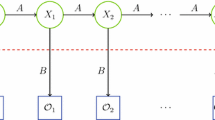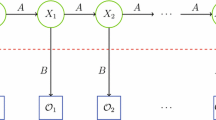Abstract
Verdicts assignment is a recurring problem in malware research and it involves deciding if a given program is clean or infected (if it contains malicious logic). Since the general problem of identifying malicious logic is undecidable, a certain amount of manual analysis is required. As the collections of both clean and malicious samples are continuously increasing, we would like to reduce the manual work to a minimum, by using information extracted by automated analysis systems and the similarity between some programs in the collection.
Based on the assumption that similar programs are likely to share the same verdict, we have designed a system that selects a subset from a given collection of program samples for manual analysis. The selected subset should be as small as possible, given the constraint that the other verdicts must be inferable from the manually-assigned ones. The system was tested on a collection of more than 200000 clusters built using the single linkage approach on a collection of over 20 million samples.
Access this chapter
Tax calculation will be finalised at checkout
Purchases are for personal use only
Similar content being viewed by others
References
Abou-Assaleh, T., Cercone, N., Kešelj, V., Sweidan, R.: N-gram-based detection of new malicious code. In: Proceedings of the 28th Annual International Computer Software and Applications Conference, COMPSAC 2004, vol. 2, pp. 41–42. IEEE (2004)
Bayer, U., Comparetti, P.M., Hlauschek, C., Kruegel, C., Kirda, E.: Scalable, behavior-based malware clustering. In: NDSS, vol. 9, pp. 8–11. Citeseer (2009)
Bilar, D.: Opcodes as predictor for malware. Int. J. Electr. Secur. Digit. Forensics 1(2), 156–168 (2007)
Bishop, M.: Computer Security: Art and Science. Addison-Wesley, Reading (2002)
Cohen, F.: Computational aspects of computer viruses. Comput. Secur. 8(4), 297–298 (1989)
Colesa, A.: Fast creation of short-living virtual machines using copy-on-write ram-disks. In: 2014 IEEE International Conference on Automation, Quality and Testing, Robotics, pp. 1–6. IEEE (2014)
Feige, U.: A threshold of ln n for approximating set cover. J. ACM (JACM) 45(4), 634–652 (1998)
Hedetniemi, S.T., Laskar, R.C.: Bibliography on domination in graphs and some basic definitions of domination parameters. Discrete Math. 86(1), 257–277 (1990)
Johnson, D.S.: Approximation algorithms for combinatorial problems. In: Proceedings of the Fifth Annual ACM Symposium on Theory of Computing, pp. 38–49. ACM (1973)
Kann, V.: On the approximability of NP-complete optimization problems. Ph.d. thesis, Royal Institute of Technology Stockholm (1992)
MacQueen, J., et al.: Some methods for classification and analysis of multivariate observations. In: Proceedings of the Fifth Berkeley Symposium on Mathematical Statistics and Probability, vol. 1, California, USA, pp. 281–297 (1967)
Oprisa, C., Cabau, G., Colesa, A.: From plagiarism to malware detection. In: 2013 15th International Symposium on Symbolic and Numeric Algorithms for Scientific Computing (SYNASC), pp. 227–234. IEEE (2013)
Oprisa, C., Checiches, M., Nandrean, A.: Locality-sensitive hashing optimizations for fast malware clustering. In: 2014 IEEE International Conference on Intelligent Computer Communication and Processing (ICCP), pp. 97–104. IEEE (2014)
van Rooij, J.M., Nederlof, J., van Dijk, T.C.: Inclusion/exclusion meets measure and conquer. In: Algorithms-ESA 2009, pp. 554–565. Springer (2009)
Shabtai, A., Moskovitch, R., Feher, C., Dolev, S., Elovici, Y.: Detecting unknown malicious code by applying classification techniques on opcode patterns. Secur. Inf. 1(1), 1–22 (2012)
Sibson, R.: Slink: an optimally efficient algorithm for the single-link cluster method. Comput. J. 16(1), 30–34 (1973)
Turing, A.M.: On computable numbers, with an application to the entscheidungsproblem. J. Math. 58(345–363), 5 (1936)
Vatamanu, C., Gavriluţ, D., Benchea, R.: A practical approach on clustering malicious pdf documents. J. Comput. Virol. 8(4), 151–163 (2012)
Author information
Authors and Affiliations
Corresponding author
Editor information
Editors and Affiliations
Rights and permissions
Copyright information
© 2018 Springer International Publishing AG
About this paper
Cite this paper
Oprişa, C., Cabău, G., Sebestyen Pal, G. (2018). Multi-centroid Cluster Analysis in Malware Research. In: Tantar, AA., Tantar, E., Emmerich, M., Legrand, P., Alboaie, L., Luchian, H. (eds) EVOLVE - A Bridge between Probability, Set Oriented Numerics, and Evolutionary Computation VI. Advances in Intelligent Systems and Computing, vol 674. Springer, Cham. https://doi.org/10.1007/978-3-319-69710-9_7
Download citation
DOI: https://doi.org/10.1007/978-3-319-69710-9_7
Published:
Publisher Name: Springer, Cham
Print ISBN: 978-3-319-69708-6
Online ISBN: 978-3-319-69710-9
eBook Packages: EngineeringEngineering (R0)




